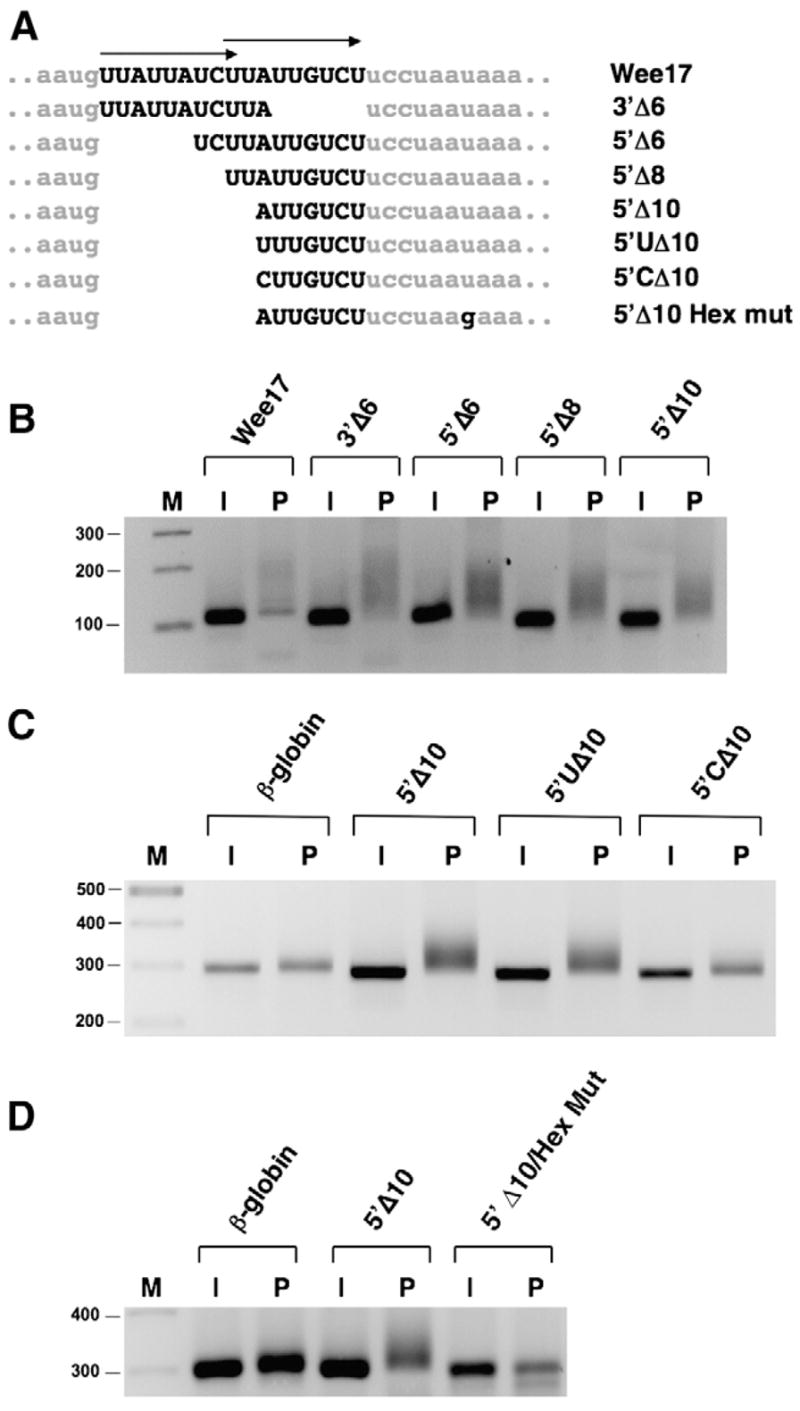Fig. 3.

The Wee17 region contains two functional translational control sequences (TCS). (A) Schematic representation of β-globin/Wee17 deletion and mutant constructs. Arrows above the Wee17 region indicate the position of two imperfect repeat sequences. Lower case nucleotides represent β-globin 3′ UTR sequence and upper case nucleotides indicate Wee1 3′ UTR sequence. (B) Analysis of progesterone-dependent polyadenylation of the β-globin/Wee17 deletion mutant reporter RNAs. Reporter mRNAs were injected into immature (I) oocytes and left untreated or stimulated with progesterone (P) for 4 h 40 min. Polyadenylation was assessed by RNA ligation PCR using a forward primer specific to the β-globin 3′ UTR of the injected reporter mRNAs. (C) Analysis of progesterone-dependent polyadenylation of 5′ boundary substitution mutations was determined as described for (B), except a forward primer specific to the GST coding region of the injected reporter mRNAs was employed. Progesterone was added for 4 h 20 min. (D) The requirement for a functional polyadenylation hexanucleotide for progesterone-dependent polyadenylation was assessed using the indicated reporter mRNAs as described for (panel C) above, except oocytes were cultured in progesterone for 3 h 40 min.
